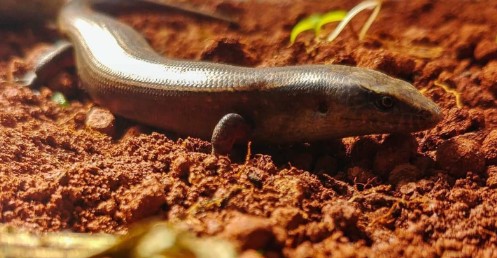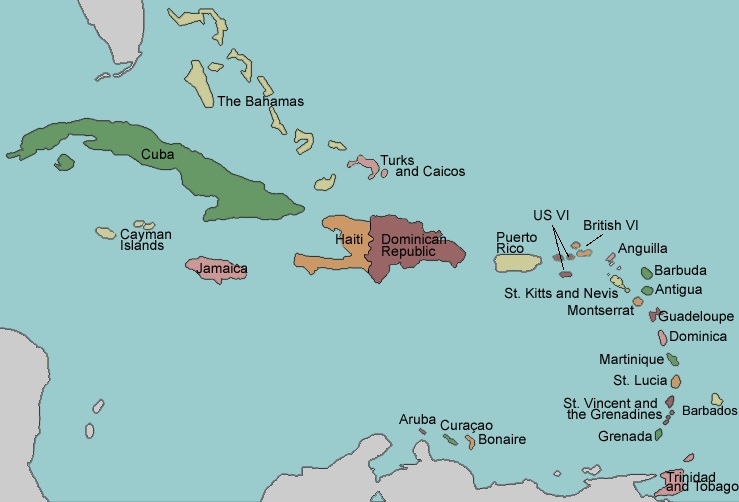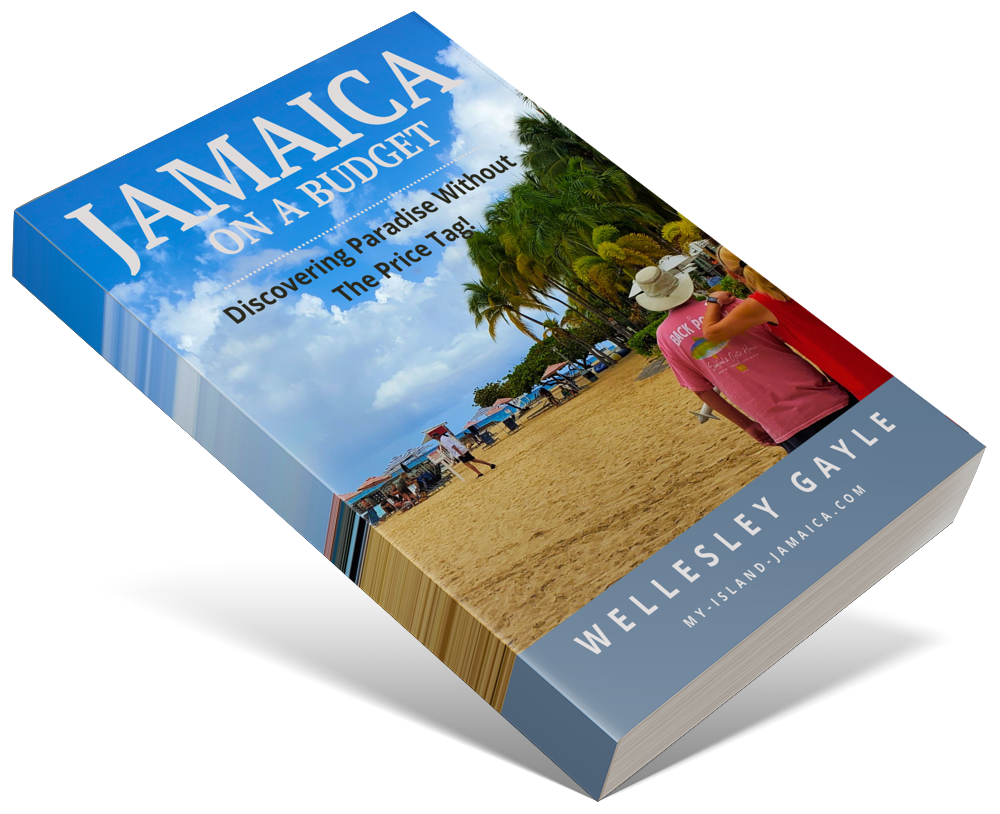Subscribe for all my updates and don't miss a thing! Sign me up!
The Jamaican Giant Galliwasp
Has The Jamaican Endemic Gone Extinct?
Sharing Is Caring! Share this awesome content with your friends now.
by Venesha Johnson | Associate Writer
Jamaica is home to quite a few mysterious creatures and animals. Some are just a part of Jamaican folklore, some are real living animals and others are a combination of both, meaning the animals are real but the tales behind them are complete myths.
New! Take a piece of Jamaica with you💃!
Savour the memories! Now you can get your authentic Jamaican souvenir items, as well as traditional Jamaican herbs, spices and housewares on our popular e-store. Click Here to learn more.
And, if you ever need a trustworthy and knowledgeable local guide, consider booking a private tour with us!
One such animal that I grew up hearing about, is the Jamaican giant galliwasp or “gallawas” as some Jamaicans may pronounce it. I have always heard the name, always heard my parents, grandparents and older folks of the church talking about it but I really never paid much attention.
In my uninformed imagination, based on the name, I pictured it to be a giant wasp that would fly around and cause you harm. And this is what I carried with me up until recently when I was informed otherwise. It came as a complete shock to me that the galliwasp was not a wasp or bee or any insect that could fly. The galliwasp is actually a reptile, a giant lizard.
So let me share with you what I have discovered about the Jamaican giant galliwasp so far.
What are Galliwasps?
An extant group of anguid lizards known as diploglossines, often known as galliwasps, lives in South and Central America and the Antilles (Anguidae is the group that includes alligator lizards, slow-worms, glass lizards and kin).
The majority of galliwasps are large-bodied lizards with entire, proportionate limbs. The unusual taxa Ophiodes, Sauresia, and Wetmorena do, however, have fewer digits and smaller limbs. Celestus (with roughly 30 species) and Diploglossus contain the vast majority of species (with about 17 species).
Physical Appearance
Galliwasps have thin, sibcircular osteoderms that give them a glossy, streamlined appearance. They resemble skinks on the surface. The largest species—the very likely extinct Jamaican giant galliwasp C. occiduus—can be rather huge overall, with the head frequently robust and the jaws strong (particularly in older males).
Overall, galliwasps have long bodies and normally have 31–40 presacral vertebrae; however, the anguine-like, nearly limbless Ophiodes have 72–74 presacral vertebrae. When I saw the actual pictures of the Jamaican giant galliwasp, I was so confused. In my opinion, it really looks like a cross between a fish and a lizard!
Where did the Jamaican Giant Galliwasp live?
They are mostly terrestrial lizards that live in forests, scrubby areas, or rocky terrain, though some have been found in marshes and swamps. Galliwasps are thought to be adept burrowers (either in soft silt or leaf litter), and some believe they are crepuscular.
Because of their way of life, they are rarely contacted and observed, and some species that are assumed to be extinct or rare may actually still exist.
I also read somewhere that even though the Jamaican giant galliwasp is said to be extinct, some recent surveys show that there is a possibility that they are still around, just extremely rare.
What Did The Jamaican Giant Galliwasp Eat?
In addition to fish, the Jamaican giant galliwasp has been known to devour fruits, various plant materials, worms, molluscs, small lizards, and mammals. Other species have been known to prey on insects, worms, molluscs, and other animals as well.
Is The Jamaican Galliwasp Harmful?
No, they were just large lizards that truly presented no harm.
Their Role in Jamaican Folklore
Due to their intimidating and striking appearance, galliwasps frequently have some significance to the local population and are occasionally mistakenly thought to be venomous.
It appears that Jamaican giant galliwasps played a part in several voodoo customs. It was believed that you run the risk of dying if one bit you and got to anybody of water before you did. This course was just a myth.
Why Did the Jamaican Giant Galliwasp Go Extinct?
It is believed that the extinction was caused by the introduction of predatory species, particularly mongooses, to Jamaica and the significant alteration of the wooded swamp habitat. Over the past 200 years, there has been a significant amount of logging, subsistence farming, and residential development in the supposed range of the species. There has also been a significant amount of cannabis cultivation.
While I hope these animals are somewhere on our beautiful island safe and at peace, I also really hope that they are never discovered, again, and put at risk.
Sharing IS Caring! Please help me get the message out by sharing this article with your friends on social media (links below). Thnx ;-)
If you found this page useful, please consider subscribing to my weekly newsletter, to get even more.
It tells you each week about the new information that I have added, including new developments and great stories from lovers of Jamaica!
Return to Jamaican Animals from The Jamaican Giant Galliwasp
Return to My Island Jamaica Homepage from The Jamaican Giant Galliwasp
References & Sources For The Jamaican Giant Galliwasp
- The Galliwasps - Scientific American Blog Network, https://blogs.scientificamerican.com/tetrapod-zoology/the-galliwasps/
- Endangered and extinct - Ole Time Sumting, https://oletimesumting.com/2018/02/11/endangered-and-extinct/
- Jamaican Animals - Myths and Legends, https://www.my-island-jamaica.com/jamaican-animals-myths-and-legends.html
New! Get My Latest Book👇🏿
|
You asked, I've answered! You no longer need to save for months or years, to enjoy paradise! I spilled the beans! sharing my top tips on finding cozy accommodations and secret gems, only the way a native could! Click Here to pick it up on my e-store and start saving now! |
See The Best Of Jamaica - In Videos!
|
My channel reaches over 140,000 subscribers worldwide and has leveraged over 11 million views, sharing, what I call 'The Real Jamaica'. Subscribe today and join our family of viewers. |
Read More ...
New! Experience The REAL Jamaica!
Book Your Private Tour here and experience Jamaica the way we (locals) do!
P.S. Didn't find what you were looking for?
Still need help?
Click Here to try our dependable and effective Site Search tool. It works!
Or, simply click here and here, to browse my library of over 500 questions and answers! Chances are someone already asked (and got an answer to) your question.














New! Comments
Have your say about what you just read! Leave me a comment in the box below.